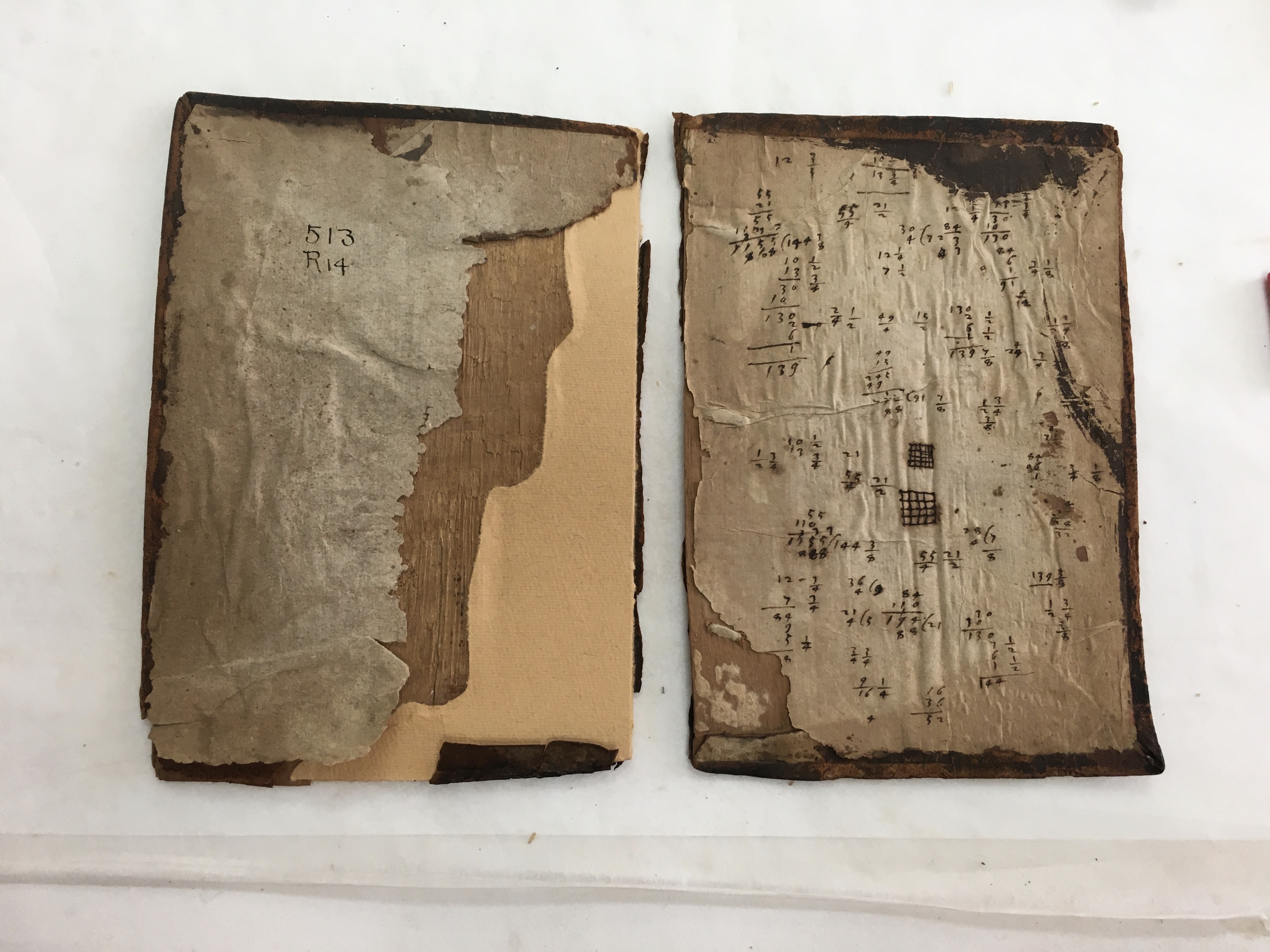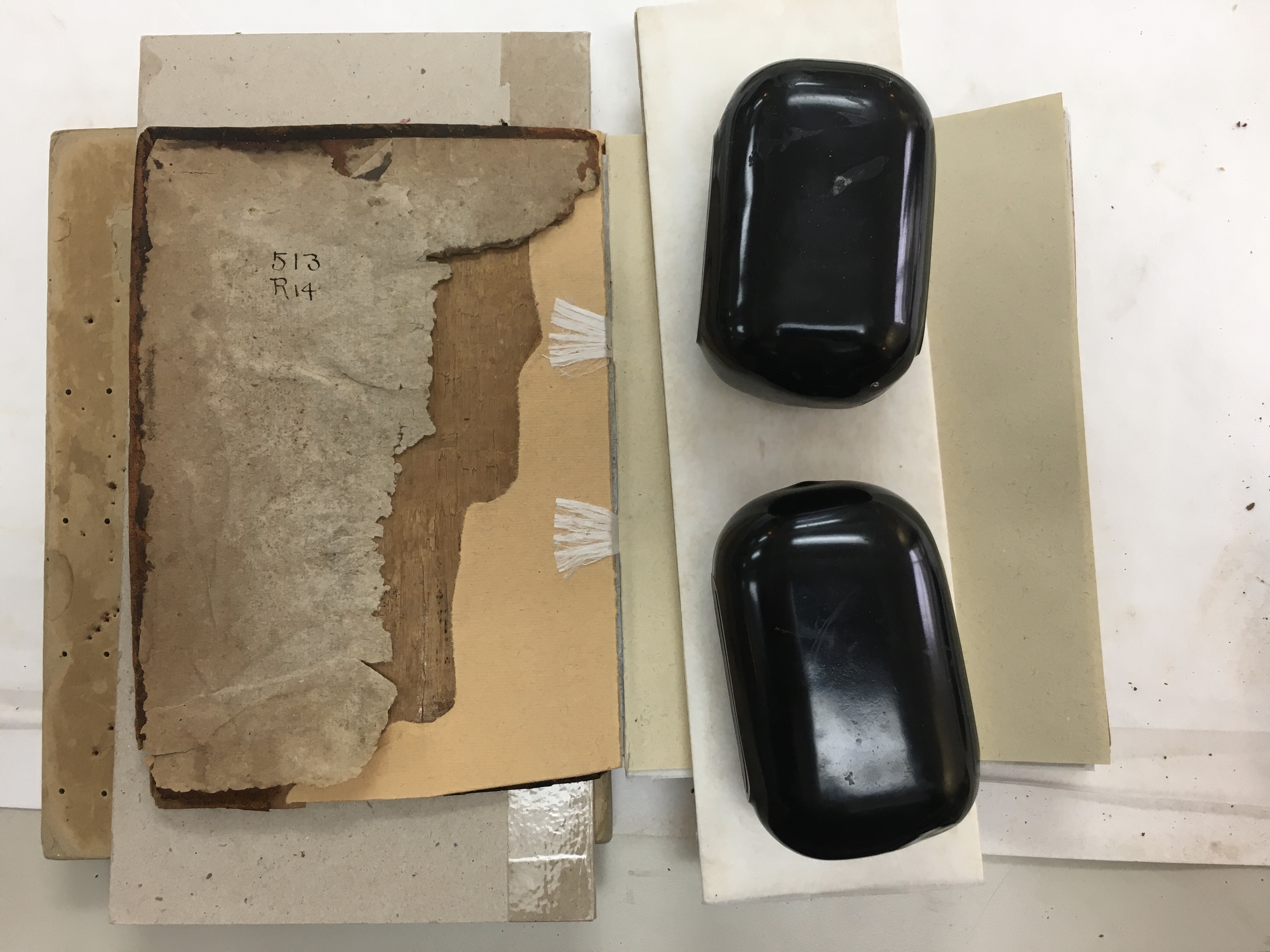From Moldy to Marvelous: Petrus Ramus’s Via Regia ad Geometriam, Part 2
In my first post about Petrus Ramus’s 1636 Via Regia ad Geometriam—a geometry textbook with warped, broken wooden boards and mold-eaten leaves—I described the innovative method I used to wash and re-size the book’s soft, pulpy, tattered paper. Once the paper was clean and strong again, however, it still needed a lot of mending. Mold is like an inside-out stomach; it secretes enzymes that digest whatever it is living on. In this case, the mold’s network of threadlike hyphae slowly spread through the book, liquifying and absorbing nutrients until the paper was digested entirely in many places. In other areas, the paper was thin and weak but still intact. Mending the book required reinforcing delicate areas and filling many losses with ragged edges, particularly at the front of the book.
The photograph above shows my workbench as I mended and guarded the tattered leaves. To fill the jagged losses, I carefully tore pieces of lightweight Korean mulberry paper (hanji) and lightweight Japanese mulberry tissue (tengujo) to match the empty places, using a brush dipped in deionized water to create a soft, feathered edge for the fills. The new paper was set down in the losses with a strong, flexible mixture of wheat starch paste and methyl cellulose. The mended areas were sandwiched between layers of cotton blotter and nonwoven polyester fabric to keep them from warping as they dried. Black scuba weights kept even pressure on the drying stacks.
The leaves were not the only part of the book to have suffered from water damage. When the spine and cover were soaked, the book’s veneer-thin wooden boards cracked as the leather over them dried and shrank. Eventually, a large piece of the front board broke out entirely, leaving an empty pocket in the leather binding. To fill this loss, I glued two layers of alkaline cardstock together and cut them to fit. I faced the new laminate with handmade paper that approximated the color of the wood, and overlapped the facing paper onto the original board. I mended splits in the boards with a warm gelatin solution.

Reattaching the boards to the text block was another challenge. The 17th-century binder had sewed the text block over two thongs of alum-tawed skin (a soft, stretchy, leather-like material) and laced the ends of the thongs through holes punched in the spine edges of the scaleboards to hold the cover on. Since the thin wood is so prone to splitting, however, I decided to use a different method, and to retain the evidence of the first binding without disturbing it. I resewed the text block over two ribbons of aligned ramie fiber, whose ends could be fanned out and glued to the insides of the boards. On the front board, the frayed-out ribbons are clearly visible on my new paper fill. On the back board, whose pastedown was intact and covered with a long-ago schoolchild’s equations, I lifted the edge of the pastedown to allow the new material to be adhered underneath.

To replace the missing leather spine of the original binding, I created a laminate of heavyweight Asian paper and tightly woven cotton fabric and toned it with acrylic paints to match the surviving leather. I inserted this new material beneath the original leather over the boards and set everything down with an adhesive that is reversible with alcohol or heat. If someone in the future ever needs to replace my new spine, they won’t need to use more water to get it off. This book has seen more than enough liquid in its lifetime!
To help the APS purchase and repair more books like this one, please visit the page for our Adopt-a-Book program! Many thanks to Pamela and James Hill for underwriting my work on this geometry book.

